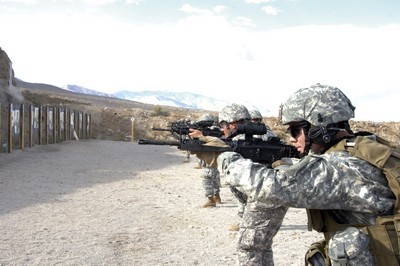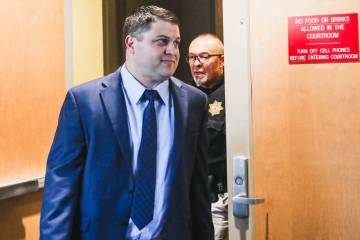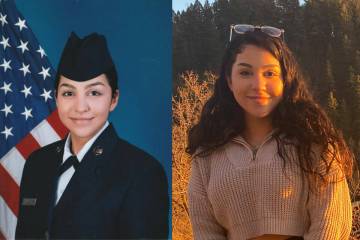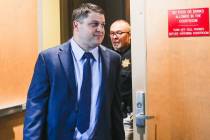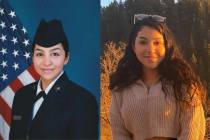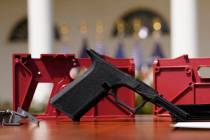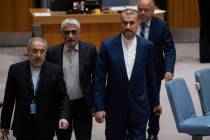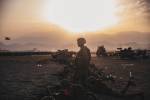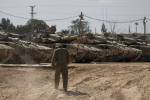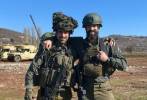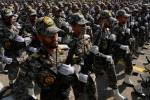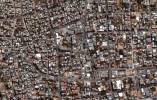Nevada training makes soldiers trust
HAWTHORNE ARMY DEPOT -- The roadside explosion wasn't real. Neither was the shrapnel that "shredded" the driver's chest and leg, nor the blood that flowed from his "wounds."
But the pressure on rookie Special Forces medic Sgt. Nick Capuano was brutal.
No one would die if Capuano failed to keep the driver "alive," and the 27-year-old had run similar drills dozens of times during his Special Forces qualification course. But this time, no instructors were watching as Capuano diagnosed the compound fracture to the driver's left leg and started to treat the shrapnel wound in the chest.
This time, it was Capuano's Special Forces teammates watching his reactions. They are the soldiers who will count on the young medic to save their lives if a real roadside bomb hits during their upcoming tour in Afghanistan. Failure meant losing the faith of his teammates before leaving for his first mission as a Green Beret.
"It was important for me to show our teammates Nick in a stressful situation," said Sgt. 1st Class Joe Healey, a veteran Special Forces medic.
"I wanted the team to see him work before we went to ensure that the same quality is coming through. You don't really want to show up in Afghanistan and have to learn about your guys."
From their firebases in the Afghan countryside, Special Forces teams of usually no more than a dozen soldiers make up an integral part of the U.S. strategy in the war on terror, both by training Afghan soldiers and by hunting down the Taliban.
Training in places like Hawthorne, an Army ammunition depot in Nevada's high desert, gives new guys like Capuano a chance to prove their worth. Capuano worked as an electrician and studied engineering in Florida before joining the Army and earning a spot in the Special Forces ranks almost two years ago.
Part warrior and part teacher, the Green Beret teams must be able to fight with and build rapport among Afghan soldiers, sometimes at the same time. They are among the Army's most highly trained soldiers, taught to think like guerillas who might perform a raid at night and work closely with locals to undermine an insurgency the next morning.
More than half of those who try out for the Special Forces fail, and those accepted spend close to a year training in weapons, engineering or communications, and longer for trauma medicine.
Lt. Col. Mark Miller, commander of the 1st Battalion of the Fort Bragg, North Carolina-based 3rd Special Forces Group, said when a soldier comes out of the Special Forces qualification course, they have a baseline of skills.
But it's with a team of soldiers that they learn how to apply the skills, Miller said.
"They are able to integrate all of those things in and basically come up with a team that is a winning combination and enables us to accomplish our mission when we come over there to Afghanistan."
The work includes trips to Hawthorne to practice in an environment that's not unlike Afghanistan, down to the talclike dust that coats trucks, boots, weapons and everything else.
"A lot of it won't be figured out until we get on the ground," Capuano said. "But people fall back to the training. If you train right, you are going to react right."
Like Capuano, Sgt. Gian Francalangia, 24, an engineer from Massachusetts, was preparing for his first Special Forces deployment during a recent trip to Hawthorne.
The teams spend weeks learning to identify roadside bombs, drive in rough terrain and fight ambushes in the rocky canyons that typically surround their firebase homes.
"You learn how the team functions and know what to do and what not to do in combat or just hanging out at the firebase," Francalangia said.
An ambush drill, which features a mock rocket-propelled grenade launcher, is so real that several veteran Special Forces soldiers said it mentally transported them back to Afghanistan.
During a roadside bomb drill, Capuano and Healey rushed to the wounded soldiers, with Capuano taking the lead, placing a splint on the driver's fractured left leg and relieving pressure from the chest wound with a chest tube.
It was later determined the driver was stable and would likely live.
"They have never seen me do any sort of trauma work," Capuano said. "The big thing is that they have confidence in me."



